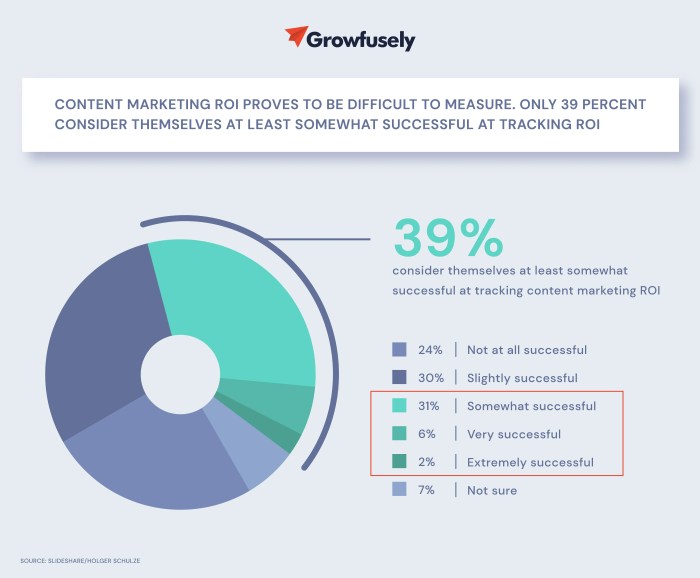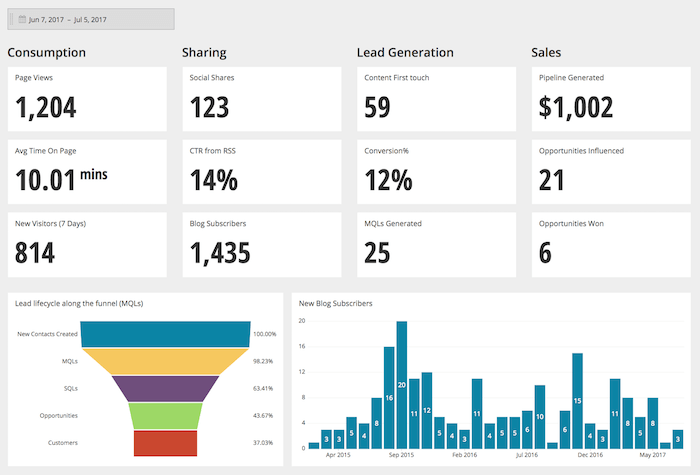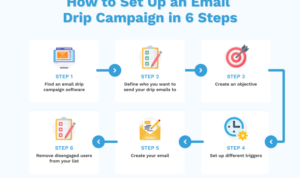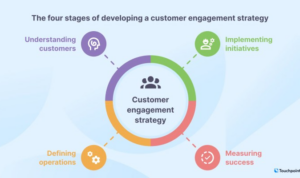Tracking Content Marketing ROI is essential for businesses looking to boost their online presence and drive sales. Dive into the world of ROI tracking with this engaging overview that delves into key metrics, tools, and challenges businesses face in optimizing their content strategies.
Learn how to effectively measure ROI, identify crucial metrics, and leverage the right tools to ensure your content marketing efforts are on track for success.
Importance of Tracking Content Marketing ROI
Tracking ROI for content marketing is essential for businesses to understand the effectiveness of their marketing efforts. It allows companies to measure the return on investment from their content strategies and make data-driven decisions to optimize their campaigns.
Benefits of Effectively Tracking Content Marketing ROI
- Identifying High-Performing Content: By tracking ROI, businesses can pinpoint which pieces of content are driving the most engagement and conversions, allowing them to focus on creating similar content in the future.
- Allocating Budget Wisely: With ROI data, companies can allocate their marketing budget more effectively by investing in strategies and channels that deliver the highest returns.
- Improving Campaign Performance: Analyzing ROI helps businesses understand what is working and what isn’t, enabling them to make adjustments to their content strategies for better results.
Examples of Optimizing Content Strategies with ROI Data
- Adjusting Content Formats: If ROI data shows that video content generates more leads than blog posts, a business can shift its focus to creating more videos to maximize ROI.
- Targeting Audience Segments: By analyzing ROI by demographic or psychographic data, companies can tailor their content to specific audience segments for higher engagement and conversions.
- Testing Different CTAs: Using ROI data, businesses can test different call-to-action buttons to see which ones drive the most conversions, helping to optimize CTAs for better ROI.
Key Metrics for Tracking Content Marketing ROI

In order to effectively measure the return on investment (ROI) of your content marketing efforts, it is crucial to identify and track key metrics that provide valuable insights into the performance of your campaigns.
Conversion rates, customer acquisition cost, and lifetime value are essential metrics to monitor when calculating content marketing ROI. Conversion rates indicate the percentage of website visitors who take a desired action, such as making a purchase or signing up for a newsletter. By tracking conversion rates, you can determine how effective your content is in driving meaningful interactions with your audience.
Customer acquisition cost (CAC) is another important metric to consider when evaluating ROI. This metric helps you understand how much it costs to acquire a new customer through your content marketing efforts. By comparing CAC to the revenue generated from those customers, you can assess the profitability of your campaigns.
Lifetime value (LTV) provides insights into the long-term value of a customer to your business. By tracking LTV, you can determine the overall impact of your content marketing on customer retention and loyalty. A high LTV indicates that your content is successful in engaging and retaining customers over time.
Engagement Metrics
When it comes to tracking content marketing ROI, engagement metrics play a crucial role in assessing the effectiveness of your campaigns. Metrics such as time on page, bounce rate, and social shares provide valuable insights into how audiences are interacting with your content.
– Time on page: This metric measures the average amount of time visitors spend on a specific page of your website. A high time on page indicates that your content is engaging and valuable to your audience.
– Bounce rate: Bounce rate refers to the percentage of visitors who navigate away from your website after viewing only one page. A high bounce rate may indicate that your content is not resonating with your target audience.
– Social shares: Tracking the number of social shares your content receives can help you understand how well it is resonating with your audience on social media platforms. Higher social shares indicate that your content is compelling and shareable.
By monitoring these engagement metrics alongside conversion rates and customer acquisition cost, you can gain a comprehensive understanding of the impact of your content marketing efforts on your overall ROI.
Tools and Technologies for Tracking Content Marketing ROI
Tracking content marketing ROI is essential for businesses to understand the effectiveness of their strategies and make data-driven decisions. There are several popular tools and technologies available that can help in this process. Let’s take a look at some of the key platforms used for tracking ROI in content marketing.
Google Analytics
Google Analytics is one of the most widely used analytics platforms for tracking website traffic and user behavior. It provides valuable insights into how users interact with your content, which can help businesses measure the success of their content marketing campaigns. Some key features of Google Analytics include:
- Tracking website traffic and conversions
- Monitoring user engagement metrics
- Identifying top-performing content
- Attributing conversions to specific marketing channels
HubSpot, Tracking Content Marketing ROI
HubSpot offers a comprehensive suite of tools for inbound marketing, including content creation, email marketing, and social media management. It also provides robust analytics capabilities for tracking the ROI of content marketing efforts. Some key features of HubSpot for tracking ROI include:
- Lead tracking and attribution
- Content performance analytics
- Conversion rate optimization tools
- Integration with CRM systems for holistic reporting
SEMrush
SEMrush is a popular tool that also offers features for tracking content marketing ROI. It provides insights into rankings, backlink profiles, and competitor analysis, which can be valuable for measuring the success of content marketing campaigns. Some key features of SEMrush include:
- Content audit and optimization tools
- Competitor benchmarking and analysis
- Social media tracking and analytics
- research and tracking
Challenges in Tracking Content Marketing ROI

Tracking content marketing ROI can be a challenging task for businesses, as it involves measuring the impact of content on revenue generation. Here are some common challenges that businesses face when trying to track content marketing ROI:
Attribution Modeling
Attribution modeling plays a crucial role in overcoming challenges related to tracking ROI accurately. By using attribution models, businesses can assign credit to various touchpoints in the customer journey, helping them understand the impact of content on conversions.
- First-Touch Attribution: Credits the first touchpoint that led to a conversion.
- Last-Touch Attribution: Credits the last touchpoint before a conversion.
- Multi-Touch Attribution: Assigns credit to multiple touchpoints along the customer journey.
Data Accuracy Strategies
Ensuring data accuracy is essential for reliable ROI tracking. Here are some strategies to address data accuracy issues:
- Implementing Tag Management Systems: Using tag management systems can help ensure that tracking codes are correctly implemented.
- Cross-Device Tracking: Implementing cross-device tracking can help businesses attribute conversions accurately across different devices used by customers.
- Data Cleaning and Validation: Regularly cleaning and validating data can help maintain data accuracy and ensure reliable ROI tracking.





